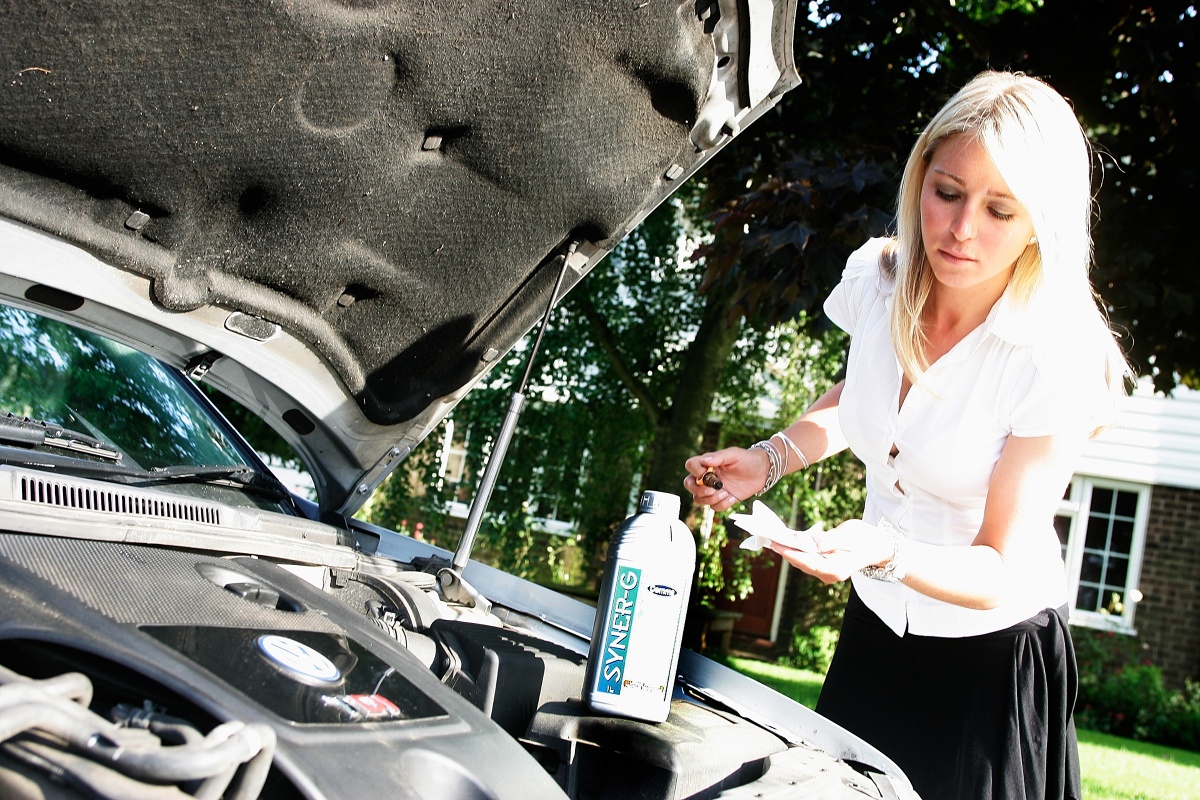
Engine oil needs to be checked
 Engine oil performs several very important functions in a car engine, so you should pay attention to it and check its condition regularly.
Engine oil performs several very important functions in a car engine, so you should pay attention to it and check its condition regularly.
Engine oil lubricates all moving parts, making them easier to move and reducing friction between them. He protects them  against wear, rust and corrosion, which ensures a long service life. Cools the car engine by removing heat from moving parts. Provides cleanliness of lubricated surfaces by removing sludge, deposits and varnishes that change the physical and chemical properties of the oil. This also makes it easy to start all nodes at any ambient temperature. To properly check the oil level in the sump, park the vehicle on a level surface. If we were driving a car before, wait at least 5 minutes, then the oil will drain into the oil pan.
against wear, rust and corrosion, which ensures a long service life. Cools the car engine by removing heat from moving parts. Provides cleanliness of lubricated surfaces by removing sludge, deposits and varnishes that change the physical and chemical properties of the oil. This also makes it easy to start all nodes at any ambient temperature. To properly check the oil level in the sump, park the vehicle on a level surface. If we were driving a car before, wait at least 5 minutes, then the oil will drain into the oil pan.
Check the oil level with the dipstick. Information about its location can be found in the car's owner's manual, but in most cars the bayonet is easily recognizable by the colored holder. The oil level indicated on the dipstick must be between the MIN and MAX marks. Each engine, in accordance with the standards, can "take" oil (even up to 1 liter per 1000 km). If the dipstick shows a level well below the MIN mark, this is a serious warning for us that further driving may lead to engine seizure and it is better to find out the cause of this. The amount of oil required for topping up should be poured slowly, from time to time checking the level on the dipstick. The level is considered correct when it reaches about 2/3 of the distance between the MIN and MAX marks.
An excess of oil is a deficiency, just as dangerous as its deficiency. Too high an oil level in a cold sump can cause the oil to expand due to expansion as the engine warms up, which can lead to seal failure and leakage. Excess oil thrown into the exhaust system can burn in the catalytic converter, causing it to partially deactivate. If the oil level reaches the MAX mark very quickly, this may indicate that fuel has entered the sump (for example, when regenerating the DPF filter in a diesel engine), and diluted oil may cause “seizing”. An increase in the oil level to the MAX mark also occurs when using some "cheap" fuels. The consequence of this is a significant thickening of the contents of the oil pan, which, due to poor circulation and lubrication, can lead to engine damage.
The properties of the oil make it possible to ensure the correct operation of car engines in any conditions. That is why regular checks of the engine oil level and its systematic replacement are so important, because used oil does not fulfill its functions and can cause failure and poor engine operation.